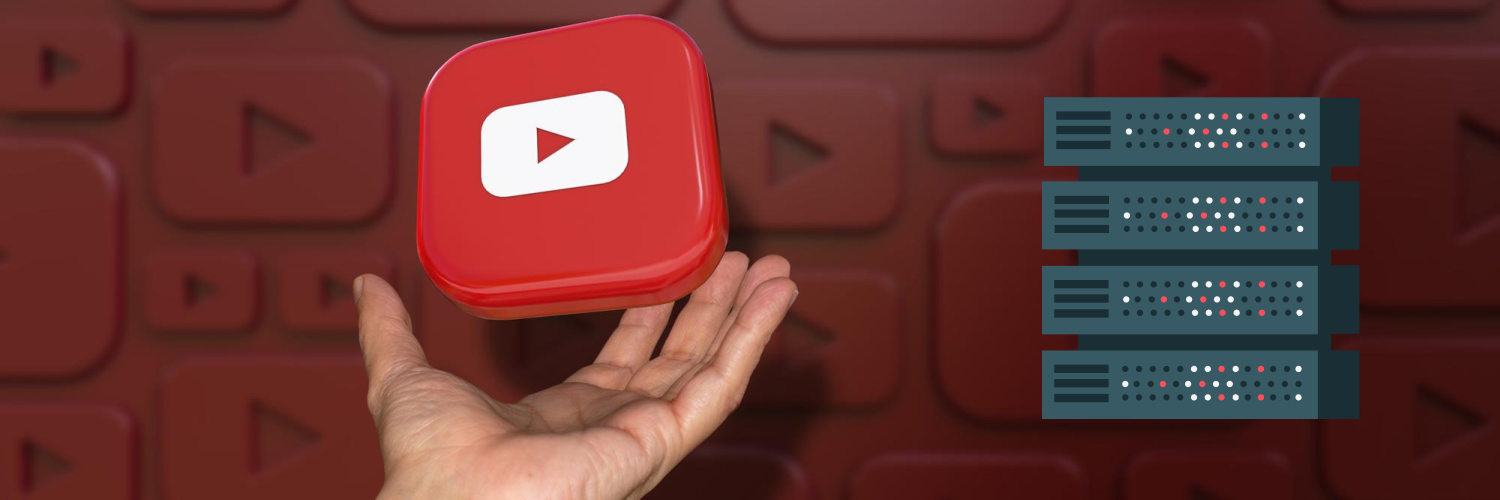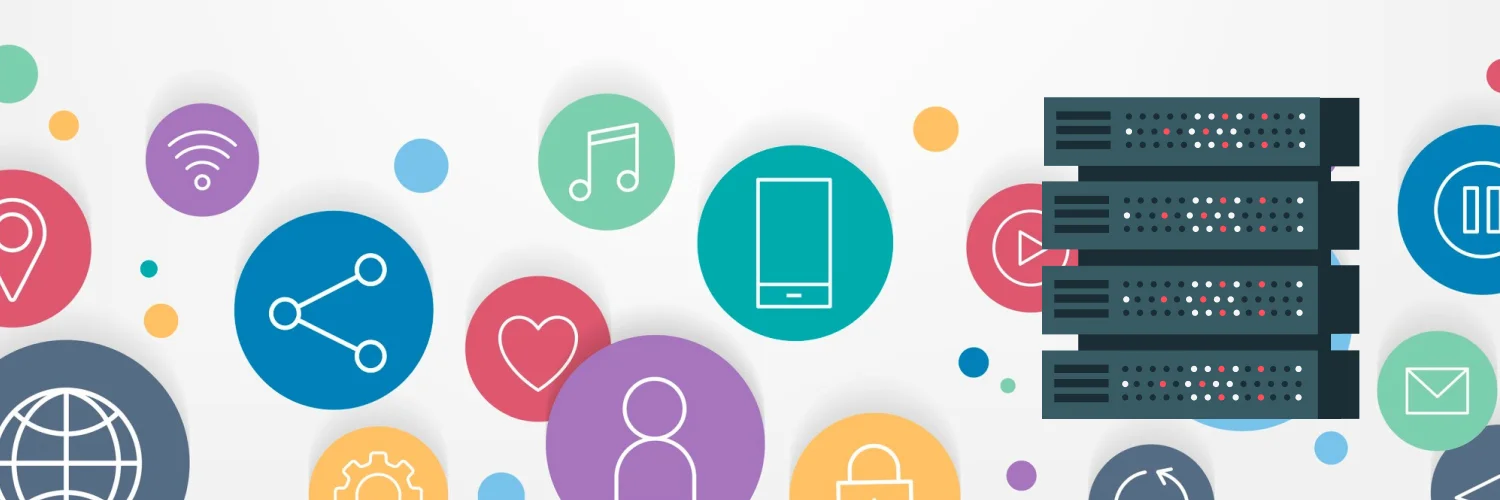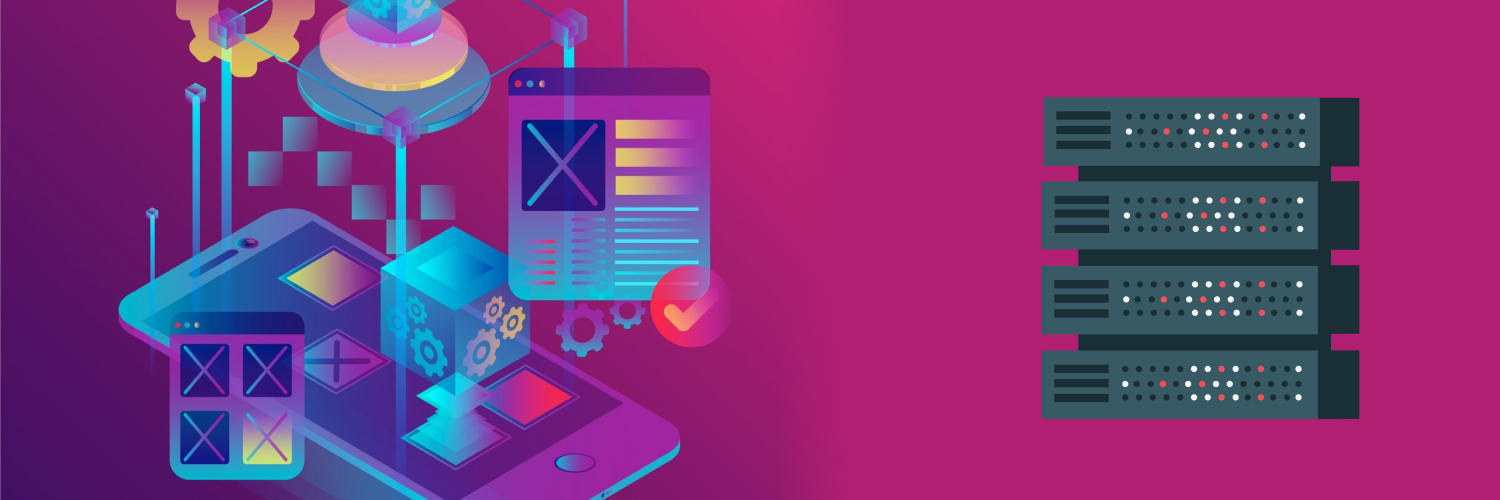The Ultimate Guide To Effectively Using Social Listening For Your Business
Nowadays, businesses must be a little more careful about their public image. Even one bad review online can send customers running for the hills, or worse, to your competition. So companies must be proactive in monitoring how they’re being talked about online to avoid this. That’s where social listening comes in.
Social listening is the tracking and analyzing of online conversations to understand what people say about a brand. It helps businesses get a pulse on their reputation and make necessary changes to improve customer advocacy.
So how does social media listening increase customer advocacy? How does it differ from social monitoring? In this guide, you’ll learn this and many other things about social listening. You can use the included table of contents to navigate through the article.
What Is Social Listening?

Social listening refers to tracking social media platforms to get insights about specific topics, brands, or industries. It’s a way to stay up-to-date on what’s being said about your brand or industry.
Social listening can also help you identify and connect with potential customers or advocates and understand how your brand or products are perceived.
So what is social media listening? Is it the same as social listening? Yes.
It is a two-step process. Here’s how it works:
- In the first step, you monitor social media sites where your target audience hangs out. Doing this gives you an understanding of the online conversations that are happening.
- Next, you analyze this data to get insights that can help you improve your business. For instance, it can be a small thing like replying to a customer’s comment or a large-scale shift, such as tweaking your brand positioning.
Either way, social media listening is a powerful way to get insights that can help you make better business decisions.
What’s the difference between social listening and social monitoring?
How do social media monitoring and listening differ? They require different approaches, strategies, and tools. Here’s a quick overview of the key differences:
Social media monitoring means tracking, measuring, and analyzing social media conversations and activities. It usually includes mentions of your brand along with competitor brands.
It’s essential to monitor social media for negative and positive keywords. Social media monitoring deals with collecting data. With social media monitoring, you can collect data for metrics, such as relevant hashtags, industry trends, brand mentions, and competitor mentions.
However, these numbers alone aren’t enough to tell the whole story about your brand. That’s why social media listening is essential.
Suppose a social media post is getting a lot of traction. In that case, your monitoring activity might tell you it has gained thousands of comments. But what if these are negative comments? Social media listening tackles this side of data, observing your customers’ “online mood.” It helps gauge customers’ feelings about your brand, product, or service.
Listening also allows you to track unbranded keywords and key phrases. In this way, you can get an idea of the general sentiment around your industry without explicitly looking for your brand name.
You can use social media monitoring and listening to create a well-rounded social media strategy covering quantitative and qualitative data. When used together, social media monitoring and listening can give you a complete picture of your brand’s social media presence.
Why Is Social Listening Important?

Ninety-six percent of customers unhappy with your brand will not tell you directly through reviews or feedback. However, they are likely to share the experience with their friends or post it online. So if you don’t know that your customers are unhappy, how can you improve their experience and turn them into brand promoters?
Social listening lets you monitor social media channels for mentions of your brand, competitors, or industry to quickly identify and respond to negative sentiment. It can also help you track potential customers and identify new sales opportunities. Here’s why social media listening is vital for brands today:
Campaign analysis
Suppose you’ve initiated a new marketing campaign and want to know how well it’s performing. Social listening can help you track any online mentions of your campaign and analyze the sentiment.
You can also use social media listening to track the performance of your competitors’ campaigns and learn from their successes or failures. It will help save you the time and resources you’d otherwise spend trying a marketing method that previously failed in your niche or industry.
Customer service
Social media provides customers with a platform to air their grievances publicly. However, if you’re not actively listening to social media, you could be the last to know that there’s a problem with your product or service.
By contrast, if you are listening, you can quickly address any issues and turn an unhappy customer into a satisfied one who is likely to tell others about their positive experience.
Lead generation
Social listening can also help you generate leads by identifying potential customers who discuss their needs online. For example, if you sell software that helps businesses automate their social media marketing, you can use social listening to track mentions of “social media marketing” or “marketing automation.”
Once you’ve identified a lead, you can reach out and offer your product or service as a solution to their problem.
Finding influencers
Social listening can help you find influencers or people with a large following who might be regular users of your product. Then, you can quickly research these people to see if they could be valuable influencers for your business.
Connect with them and develop a relationship. These relationships could lead to valuable opportunities down the road, such as being able to collaborate on projects, getting featured on their blog or social media channels, or even becoming friends.
Crisis management
One of the most notable benefits of social listening is that it can help you manage crises. For example, suppose you own a business and there’s a negative story about your company circulating on social media. In that case, you can use social listening to track mentions of the story and see how people react.
Then, you can take the necessary steps to address the issue and mitigate any damage to your reputation. Likewise, social listening can help you identify potential crises before they happen.
For example, if you see a spike in mentions of a particular problem that your customers are having, you can take steps to address the issue before it turns into a full-blown crisis.
Brand reputation
Your brand’s reputation is one of its most valuable assets. But unfortunately, it only takes one bad experience to damage your reputation, and that damage can be difficult or even impossible to undo.
If a customer has a bad experience, they may go to social media to complain. Before you know it, hundreds of other people who have had similar experiences with your brand chime in.
It results in a negative spiral of sentiment that can be hard to stop. However, in some cases, you may be able to turn a bad experience into a positive one by responding quickly and effectively.
Industry trends
Social media listening is essential for any business that wants to stay on top of its online reputation and understand its customers. Besides consumer sentiment, you must also stay on top of industry trends to ensure that your business is relevant and up-to-date.
Social media listening can help you track any debates or conversations around industry trends and adjust your products, services, or marketing strategy accordingly.
For example, if you run a hotel, you can use social listening to track mentions of “staycations” or upcoming post-pandemic trends. Suppose there’s a significant increase in people talking about staycations. It could indicate that fewer people are traveling abroad. As a result, you may need to focus your marketing efforts on local audiences instead.
How Does Social Listening Work?

Social listening aims to gain insights from social media data. The process begins with data collection, and data can be collected manually or through social listening tools. Once the data is collected, it is then analyzed to extract insights.
There are many ways to analyze social media data. Sentiment analysis is one method that can help understand how people feel about a specific topic. Other methods include content analysis and network analysis.
How do you do social listening? Here are the three main steps:
Step 1: Monitoring
In the first step, you must decide what you want to listen for. You can do this by setting up keyword filters. For example, you may want to set up a filter for your brand name or product.
Suppose you want to “listen” to social media to learn how people feel about your latest product. In that case, you would set up a keyword filter for your product name.
Then, you’d monitor the mentions of your product name to see what people are saying.
Step 2: Analysis
In the second step, you need to analyze the collected data. It’s where you extract insights from the data.
You can do this through specific methods, such as sentiment analysis. In this method, you analyze the emotions expressed in the data. For example, you may want to know how many people are talking about your product and what percent of those mentions are positive, negative, or neutral.
Step 3: Response
After analyzing the data, you can take action based on your findings. For example, if you find that there are primarily negative mentions of your product, you may want to take steps to improve it.
You may also want to respond to people talking about your product. You can engage in conversations with them to get feedback about your product and try to improve their experience.
Suppose most customers say that the sign-up page for your new app is very complicated. You can take steps to simplify it based on that feedback. Or, you can create helpful videos and tutorials to onboard customers more efficiently.
How Can Brands Collect Data for Social Listening?

Businesses can collect social media data through different means, such as an online tool or a web scraper. Here’s an overview of some methods:
Social listening tools
Like every other business process, there are tools for social listening too. You can use one or many of these tools to learn how people feel about your product or services.
What are social listening tools?
Social listening tools are online software that collects data about a brand or topic from social media platforms and websites. The brand then analyzes this data to make better marketing decisions.
There are different types of social listening tools. Still, they all have one common goal: to help businesses improve their marketing strategies by understanding what people say about them online.
So what is social listening software in the first place? As the name implies, social listening software listens to what’s being said about your brand or product on social media. You can set filters to specify the bits of data the tool or software must collect.
If you want to gauge customer sentiment, you can collect data containing positive and negative keywords. Later, when you analyze this data, you’ll have more of a sense of whether customers are satisfied or disappointed by your services.
Web scraping
Data or web scraping is the gathering and organizing of information from the internet, making it usable for your business.
Scraping Robot is one of the best solutions for scraping web and social sites for data. This software can help you increase your data arsenal and learn critical information about competitors and customers in your industry. With Scraping Robot, you no longer have to worry about all the headaches that come with scraping, like proxy management and rotation, server management, browser scalability, CAPTCHA solving, and looking out for new anti-scraping updates from target websites. There are no hidden fees, monthly costs, or complicated pricing tiers. In addition, they have a dedicated support system and 24/7 customer assistance!
Businesses can collect data for social listening through web-scraping, but for that, you’re probably going to need proxies.
Proxies
Proxies are IP addresses that route your request through another server before reaching the website you’re trying to scrape. They help shield your identity and make it more difficult for websites to block your IP address while social listening.
Data center proxies
As the name suggests, data center proxies are stored in data centers. These are the cheapest proxies, and they’re plentiful and readily available. They’re also fast, so they’re good for use cases that require fast speeds.
The biggest drawback to data center proxies is that they’re more easily identifiable originating in a data center. Since most users don’t access the internet with data center IP addresses, this automatically throws a red flag for many websites. Some websites ban all data center proxies, while others ban entire subnets if they detect bot-like activity from one data center IP address. That’s why Rayobyte has a diversity of C-class subnets, but A- and B-classes as well.
ISP proxies
ISP proxies are one of your best proxy options. ISP proxies are IP addresses issued from real consumer Internet Service Providers (ISPs) but housed in data centers. ISP proxies combine the authority of residential proxies with the speed of data center proxies, so in the end, you get the best of both proxy worlds. In addition, Rayobyte puts no limits on bandwidth or threads, meaning more significant savings for you!
Rayobyte currently offers ISP proxies from the US, UK, and Germany.
Residential proxies
Residential proxies are issued by real consumer internet service providers (ISPs). These are the type of IP addresses most people use to access the internet. The biggest advantage of residential proxies is their authority. You can tap into a network containing millions of devices from all over the world that belong to real users. They have the most authority and are least likely to be detected by anti-bot software.
Rayobyte has a large pool of residential IP addresses capable of handling projects of any size. You can target any country in the world at no extra cost, don’t put any limits on how many concurrent threads you send, and provide a separate, unique IP address for every request.
Because residential proxies have to be obtained directly from end-users, ethical proxy providers have to take extra steps to ensure that they aren’t negatively affected when their IP address is used. At Rayobyte, we set the industry standard for ethical proxy sourcing. We make sure our end-users provide fully informed consent. We don’t bury our TOS at the bottom of pages of small type. We only use their IP addresses when their devices are either plugged in or charged and if they aren’t using them. We’re always happy to discuss our ethical practices.
Our commitment to ethics doesn’t stop at how we acquire residential proxies. We also vet our customers. There’s no option for buying our residential proxies directly on our website. Potential buyers must demonstrate that their use case is legitimate before we sell them residential proxies. After the purchase of our residential proxies, we continue to monitor their usage for any signs of illegal or unethical use.
How Can Organizations Best Approach Social Media Listening?

eMarketer reported that half the marketers in the world were using social media listening during the pandemic to understand the target audience’s changing preferences. As we start to see the light at the end of the tunnel, it’s more important than ever for brands to keep up with social media listening.
Organizations should consider social media listening as part of their larger marketing strategy because it can provide valuable insights into customer sentiment, preferences, and needs.
Additionally, social media listening can help organizations identify opportunities and threats, track brand reputation, and monitor the competition. There are a few key things to keep in mind when it comes to social media listening:
Know what you want to listen to
If you’re not sure what you want to get out of social media listening, you won’t be able to use the data you collect effectively. Take some time to think about your organization’s goals and objectives and what type of information would be most helpful in achieving those goals.
Do you want to listen only for direct mentions of your company? Are you listening to hashtags and keywords related to your industry? These are all important questions to consider before you start social media listening.
If your social media listening strategy also includes industry trends, you’d have to listen to topics related to your niche and brand.
Invest in the right tools
There are a lot of social media listening tools on the market, and it can be overwhelming to try to decide which one is right for your organization. Instead, do some research and look for a tool that fits your specific needs. Some things to keep in mind when you’re choosing a social media listening tool:
- Ease of use: The tool should be easy to use and understand, with a user-friendly interface.
- Insights and reporting: It should provide valuable insights to help you make informed decisions.
- Compatibility: It must be compatible with other tools, such as marketing and CRM tools.
Go beyond your circle
Your “circle” refers to the direct mentions of your brand, comments on your post, or direct messages. Often, the most valuable insights come from outside your circle.
Listen to what people say about your industry, competitors, and even your city or country. It will give you a well-rounded view of the current landscape and help you identify any potential opportunities or threats.
You should also listen to conversations that don’t directly mention your brand but are talking about your industry. Some users may also misspell your company’s name. Likewise, some people may use short names or abbreviations to mention your brand or product. You must also listen to these conversations as they can provide valuable insights.
Be proactive
Social media listening isn’t a one-time thing. It should be part of your ongoing marketing efforts. Monitor the data regularly and adjust your strategy based on your insights.
Additionally, don’t wait for a crisis to happen before you start social media listening. If you’re already monitoring the conversation, you’ll be able to act quickly and efficiently if a problem does occur.
Don’t forget the news
It’s important to know the current economic and geopolitical climate, as it can significantly impact your industry. For example, the COVID-19 pandemic has forced many organizations to change their strategy. Those who weren’t monitoring the news missed out on opportunities to adapt.
Track your competitors
If you’re wondering how to use social listening in the grand scheme of things, it’s important to understand that your competitors are also using it. They’re monitoring what people are saying about their brand, industry, and even you. So, you must do the same. It will give you a better understanding of the current landscape and help you make informed decisions.
You can use social media listening to determine what works for your competitors and what doesn’t. Then, if something works, make an effort to outperform them by creating more valuable strategies.
If something doesn’t work, learn from their mistakes and make sure you don’t make the same ones. Then, figure out how you can give your audience a better experience.
Empathize with your customers
You can only reap the benefits of social media listening if you care about your customers. Take the time to understand their needs, wants, and pain points. Try to see things from their perspective. Only then will you be able to provide them with the best possible experience. If someone has a negative sentiment toward your brand, learn why they feel that way and see if there’s anything you can do to improve the situation.
Don’t just listen to what your customers are saying. Take a look at how they’re saying it. The tone and emotions conveyed in their posts can give you a better understanding of how they feel.
Don’t miss the user-generated content
User-generated content is the bread and butter of social media. It is a great way to connect with your audience and an excellent source of insights. Make an effort to track user-generated content (UGC) related to your brand or product. It will give you a better understanding of how people use your product and what they think of it.
Moreover, UGC can also be used to create valuable content. For example, you can use it to create social media posts, blog articles, or even product reviews.
Be careful with the data analysis
Social media listening can provide you with a wealth of insights, but you need to be careful with using the data. Don’t make assumptions or jump to conclusions. The data should be used to supplement your existing knowledge, not replace it.
In addition, don’t take the data at face value, question the sentiment behind the information. A post has a thousand comments. Does that mean your current social media strategy is working well? What if over half of them are negative comments? It’s the sentiment that matters.
Defining Characteristics of Your Social Media Listening Strategy

When a business develops its social media listening strategy, it should consider various factors such as its goals, target audience, and the resources available. However, the most important characteristic of an effective social media listening strategy is that it helps track relevant conversations about your brand, product, or industry.
Some other key characteristics to consider when developing your social media strategy include the following:
Automated or manual?
Sure enough, you can take the old road and do everything manually. But with all of the technology available today, you have no excuse not to automate as much of your social media monitoring as possible. Automated social media listening can help you save time and get more accurate results.
There are several ways to automate your social media listening. Social listening tools have become more advanced and easier to use in recent years. On top of that, you can use web scraping proxies or a pre-built web scraper to collect as much data as you need to infer consumer sentiment, market conditions, and more.
Proactive or reactive?
Proactive social media listening means that you’re monitoring social media channels for mentions of your brand or product, even when there’s no specific crisis or event. You might do this to get a general idea of how people feel about your brand or identify potential issues early on.
On the other hand, reactive social media listening only responds to a specific event or crisis. Nevertheless, it can help you quickly assess and respond to any negative sentiment. For example, if there’s a sudden drop in your brand’s social media engagement, it might be due to a negative news story about your company. In this case, you would need to react quickly and address the situation accordingly.
Both proactive and reactive social media listening have their advantages and disadvantages, so it’s up to you to decide which one makes more sense for your business.
Broad or narrow?
Your social media listening strategy can be either broad or narrow in scope. A broad social media listening strategy means monitoring many social media channels for mentions of your brand, product, or industry. It gives you a general idea of what people say about you online.
But if you want to save resources and time or focus on a specific social media segment, you can only monitor a few social media channels. It’s perfect for identifying potential issues early on and tracking brand sentiment in real-time.
Which one you choose will depend on your business goals and your resources.
Data-driven or insight-driven?
Your social listening strategy can be either data-driven or insight-driven. A data-driven social media listening strategy is based on collecting as much relevant data as possible. Once you have the data, you can look for patterns and trends. It is the perfect strategy to get a general idea of customer sentiment. An insight-driven social media listening strategy is based on collecting data and analyzing it to get actionable insights. Then, you can interpret this data and extract meaning from it.
Businesses use insight-driven social listening to make informed decisions. For instance, if you’re running a new marketing campaign, you might want to focus on the insights to see how well it’s doing.
Keyword-based or topic-based?
Again, it depends on how narrow or broad your social media listening strategy is. If you’re interested in monitoring only a few specific keywords or terms, keyword-based social media listening is the way to go.
Meanwhile, topic-based social media listening means monitoring a particular topic or trend instead of just focusing on one or two keywords. You should opt for this to study industry trends and monitor competitor performance.
How To Use Social Listening

Businesses can leverage social listening to track, monitor, and analyze online conversations to generate valuable insights. Here are some examples:
Identify customer sentiment
You can understand how customers feel about your products or services by tracking what is being said about your brand online. It’s vital to know how customers feel and what they think of your brand so you can make the necessary improvements. Here are some questions to ask yourself when planning a social listening strategy to determine consumer sentiment:
- What are people saying about our brand?
- Are they happy or unhappy with our products/services?
- What do they like or dislike about our brand?
- What are their pain points?
- What are some unmet needs that we can address?
You can use social listening to track competitor sentiment as well. For example, if customers are happy with your competitors, you can determine why. Then, you can apply the same approach to your business processes.
Understand industry trends
Keeping track of industry-related conversations can help you identify trends. You can use social listening to track these conversations and join in on the conversation.
This way, you can position your brand as an industry thought leader. For example, if you’re a travel company, you can use social listening to track conversations related to the travel industry.
What are the new trends in the travel industry? Are people traveling just as often as they were before the pandemic? Is there a difference in the pattern of people’s travel plans? Knowing this helps you make informed decisions about your company’s next step.
Monitor campaign performance
If you’re running a marketing campaign, social listening can help you track its performance. You can see how customers respond to your campaign and make necessary changes.
You can also use social listening to track competitor campaigns. It helps you learn from their successes and failures.
Improve customer service
By monitoring online conversations, you can see where customers are having difficulties. You can then address these issues and improve your customer service.
For example, you can use social listening to track conversations about sizing if you’re a clothing company. Then, if you see that customers are having trouble finding the right size, you can address this issue and make it easier for them to find their sizes.
How Can Social Media Listening Increase Customer Advocacy?

Customer advocacy means that loyal customers speak on behalf of your brand to their friends, families, and social media followers. By leveraging the power of customer advocacy, you can turn your most satisfied customers into your best salespeople.
Your customers pay two times more attention to recommendations or posts by their friends. So why not turn your customers into your brand advocates and let them do the talking for you?
There are plenty of advantages to customer advocacy. First, it’s a great way to generate word-of-mouth marketing. When your customers share their positive experiences with your brand, it helps to build trust and credibility.
Second, customer advocacy can help you reach a wider audience. Social media has made it easier for customers to share their experiences with friends and followers. Thus, you have the potential to reach hundreds or even thousands of new prospects.
More importantly, customer advocacy can be a significant source of leads and sales. When customers recommend your products or services to their social networks, it can significantly increase business.
Of course, customer advocacy doesn’t just happen on its own. To harness the power of customer advocacy, you need to have a strategy.
Using social listening for customer advocacy
One of the most effective ways to increase customer advocacy is social listening. Social listening involves monitoring social media for mentions of your brand, product, or service. It can help you to identify both happy and unhappy customers. Then, you can take the necessary steps to resolve any issues and turn unhappy customers into brand advocates.
Of course, social listening can do more than just help you increase customer advocacy. It can also provide valuable insights into your customers’ needs and wants. Additionally, it can help you identify new sales opportunities and track your competition.
But how does it specifically facilitate customer advocacy? Suppose one of your customers had a poor experience with your product. If you’re not using social listening, you may never know about the issue. But if you are monitoring social media, you can quickly identify the problem and take steps to resolve it. Your approach will improve the customer’s experience and increase their chances of recommending your brand to their friends.
The example above reflects proactive social listening, which means you continuously monitor social media and consumer sentiment. Similarly, reactive social listening can also help turn customers into brand advocates.
Suppose your new product or service is subpar and doesn’t meet the customers’ expectations. You notice a hashtag on social media about your product. The customer’s disappointment may go unnoticed if you’re not using social listening. But if you use reactive social listening for crisis management, you can resolve your customers’ problems. For example, you may offer a refund, exchange, or other compensation. As a result, customers are likely to have a better opinion of your brand and might even suggest it to their peers.
Final Thoughts

Social listening is necessary to stay ahead of the curve and maintain a successful social media presence. After all, understanding what people are saying about your brand online is the first step to addressing any negative sentiment and turning it into a positive one.
You can use different social listening tools like web scrapers and proxies to collect data for social listening. When using proxies for social listening, use an ethical proxy provider to ensure your data is collected anonymously and accurately. Rayobyte offers ethically-sourced residential, data center, and ISP proxies to facilitate the implementation of your social listening strategies. Reach out to them today!
The information contained within this article, including information posted by official staff, guest-submitted material, message board postings, or other third-party material is presented solely for the purposes of education and furtherance of the knowledge of the reader. All trademarks used in this publication are hereby acknowledged as the property of their respective owners.






